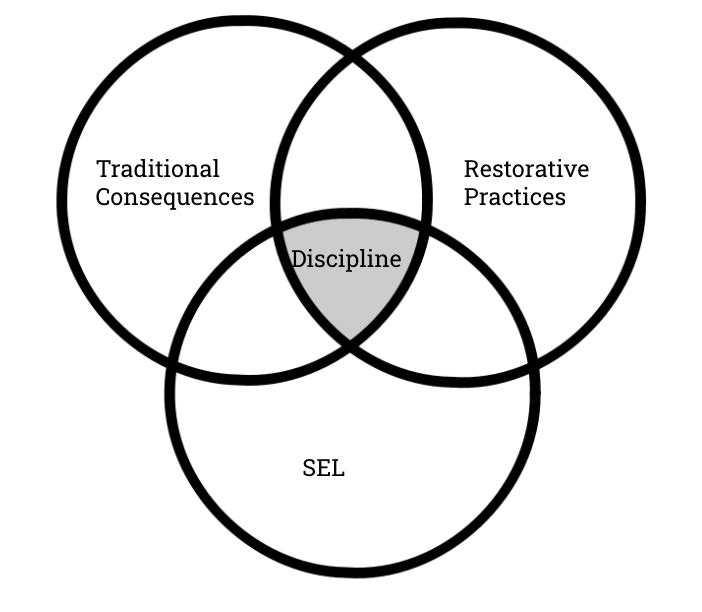Restorative Practices
The aim of restorative practices is to create a sense of belonging and to manage conflict by repairing harm and relationships.
“The fundamental hypothesis of restorative practices is that human beings are happier, more cooperative and productive,
and more likely to make positive changes in their behavior when those in positions of authority do things with them,
rather than to them or for them.” - Costello, Wachtel & Wachtel
How it started: Restorative practices has been a part of the CCSD since the roll out of our 2018-2023 Strategic Plan. Beginning in the spring semester of 2022, a 3-5 year implementation plan started to be developed. From this plan, the Restorative Practices Implementation Team was created, which includes teachers, administrators, and mental health professionals. The high school implementation team went through a two day training based on the Restorative Justice for Education model led by BOCES. This turn-key training allowed the team to then provide the entire high school faculty and staff to receive training in the first tier: building relationships and community. In this first year of implementation, and continuing into the second year, the focal point will continue to be on relationships and community. We have also begun Tier 2 work: repairing minor harm. As we continue to build capacity at the high school, we hope to see the current systems that are in place for student support and discipline become imbued with the restorative lens.
 District Goals:
District Goals:
1. create healthyrelationships between students and faculty
2. foster a sense of belonging
3. foster common understanding of the impact of our behavior
4. create a way for us to learn from our mistakes
5. seek to repair harm done to relationships
6. attend to the needs of persons harmed and the school community as a whole
Community & Content Circles:
1. used to develop relationships and build a sense of community within the classroom
2. provide an opportunity for those to speak who ordinarily aren’t given a voice or
struggle to find their voice
3. help to build connections among students that will provide a pathway for healing when conflicts arise
Why it’s important to the us: We are in the business of educating the whole child and in keeping our students at the center of everything that we do. In these formative years of their lives, students need a disciplinary approach that they can learn from. Discipline comes from the Latin word disciplina, meaning instruction given, teaching, or knowledge. If all behavior is a form of communication, then when students misbehave, we are committed to coming alongside them to help them learn to make better choices.
Resources:
Restorative Practices for Parents
Additional RP Information from the National Education Association
Fostering Healthy Relationships & Promoting Positive Discipline in Schools




